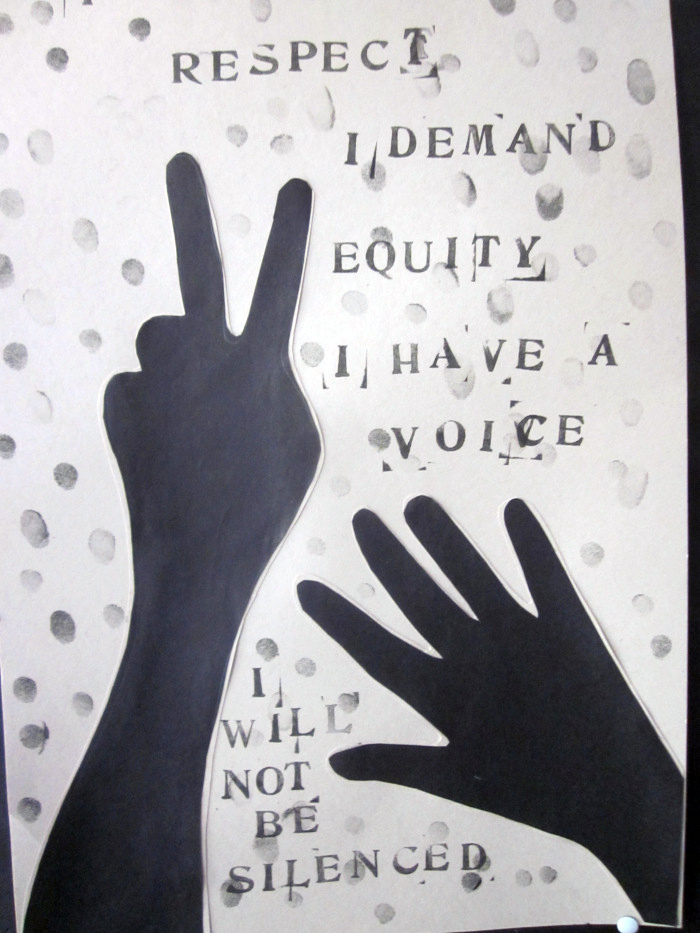For many educators, the necessary demand for racial justice in how we police our communities has been inextricably tied to how we educate our Black youth. In our role as educators serving a diverse group of students in urban areas of Los Angeles, Boston, and Milwaukee, we have grappled with the question of how we can ensure that Black lives matter in our schools.
Districts and schools have responded by discontinuing or reducing partnerships with the police and ending harmful policies such as random searches and whitewashed curriculums. Although demanding change at a federal, state, and district level is crucial to dismantling racist policies in schools, change must also occur at the school level.
 Change is not limited to a school’s discipline policy; rather utilizing a teacher-powered organizational structure aids in equitable education. The Black Lives Matter platform provides a vision for just schools that includes access to a fully funded education, curriculum that critically looks at slavery and colonization, schools with wraparound services, community control around school budget and plans, and the end to privatization of education.
Change is not limited to a school’s discipline policy; rather utilizing a teacher-powered organizational structure aids in equitable education. The Black Lives Matter platform provides a vision for just schools that includes access to a fully funded education, curriculum that critically looks at slavery and colonization, schools with wraparound services, community control around school budget and plans, and the end to privatization of education.
The roadmap for this type of transformative work might seem unclear. Each school exists within its own community with its unique strengths and needs. We cannot impose one learning program or initiative on all schools, because this disproportionately silences the voices of those in the Black community. There are schools which are trusting teachers to organize alongside students and families, to break down racist practices and co-create schools which are centered around the strengths and dreams of students.
We can look to Teacher-Powered Schools across the nation as examples of this transformative work. We offer these teacher-powered practices as a guide to help educators make best decisions for their individual schools. These practices support the designing and running of student-centered schools that benefit all students; however, in order to actualize the vision of schools put forth by Black Lives Matter, we challenge educators to make concerted efforts to see their schools through the lens of Black students to dismantle racist practices and rebuild schools for Black students by using the following practices:
 |
Keep Students at the Center of Decision-Making |
Keeping students at the center of decision-making is essential to promoting equity in schools. By intentionally centering the voices and experiences of Black students when making decisions, schools can work to meet their needs and better provide access to a quality education. Here are some examples:
|
 |
Meaningfully Involve Families and Communities |
This practice recognizes that students, families, and community members are necessary partners in co-creating just schools for Black students. Teacher-Powered Schools actively involve students, families, and community members in local control over school-wide decisions. Families and community organizations are encouraged to be involved in student learning and school activities. Here are some examples:
|
 |
Honor Student Voice and Choice |
Teacher-powered schools can lead to student-powered schools. With the predominance of White women in the education workforce, it is critical that school teams evaluate their biases and actively work to ensure equity in their schools. Teacher-powered schools can create a more just experience for Black students inside and outside of school, with more opportunities for Black voices to be heard. Here are some examples:
|
 |
Cultivate a Collaborative Culture |
Co-creating a collaborative culture among the teaching and administrative staff allows for the intentional work to fight against the criminalization of Black students. It is essential that Black students and voices are included in the culture building process. Here are some examples:
|
 |
Embrace Transparency in Decision-Making |
Transparency in how schools make decisions ranging from discipline policies to classroom practices cultivates trust and accountability. Since many systems and policies have intentionally lied and withheld information to harm the Black community, it is important that schools proactively act against such practices and make decisions transparently. Here are some examples:
|
 |
Create Shared Leadership Structures |
Power within schools is often in the hands of the principal and/or members of the school board, who often do not work directly with students and who are disproportionately White. By distributing school leadership, power and responsibility is shared by the entire school. This allows the opinions, backgrounds, and perspectives of Black educators to be part of the decision making process. Here are some examples:
|
 |
Reimagine and Rotate Leadership Positions |
Leadership and power are interconnected, and disproportionately White. Teacher-powered schools aim to lessen the power disparity between teachers and administration which is present in traditional schools. Rotating leadership allows for more teachers to gain leadership experience. It also allows for less turnover and easier transition once a staff member leaves the school, which is a phenomenon in predominantly Black schools. With leadership structures constantly evolving, power is diffused, thus allowing more Black voices to be honored. Here are some examples:
|
 |
Engage in Peer Observation |
Feedback is essential to one’s growth as a teacher, but the system of evaluation in many schools feels punitive and designed to make changes to the school staff. By engaging in a system of peer observation, teachers have the opportunity to build on their strengths and address their shortcomings. This practice emphasizes growth through collaboration over individualism. Here are some examples:
|
 |
Take on a Learner Mindset |
Teachers see themselves as lifelong learners not only to improve their teaching, but also to continually learn more about racial injustice by confronting their biases and to develop skills and knowledge needed to redesign schools in which Black students thrive. Here are some examples:
|
A Call to Action
This article was written with the intention of bringing the national conversation about race this past spring, which started with the uprisings after the death of George Floyd, to focus on the Black student experience. Not only must we focus on changing national education policy, but we must also focus on changing school-level policies and practices which perpetuate White supremacist ideologies. Recognizing areas where Black students and their families can have greater voice and decision-making power is the first step toward education for liberation.
Discussion Questions for Individual Educators:
- How do you identify (race, ethnicity, ability, professional role….)?
- How do you describe your philosophy of teaching? What are the core values of your teaching and learning?
- How do you see yourself in your community?
- What are your strengths as an activist? Where can you grow (professionally, personally)?
- What type of a leader are you? What type of leader do your Black students need you to be?
- How can you include Black families, colleagues, and community members in leadership opportunities at your school?
- What will you need help with or need to learn more about? How can you seek this information? What is your next step in your anti-racist work?
Discussion Questions for School Teams:
- What does education for liberation mean to you?
- Which teacher-powered practices already exist in your schools? How can you leverage those practices for Black students and families?
- What is one thing you can implement at your own school that can benefit Black students and families?
- What is one concrete way you can include Black students and families in your school’s decision making?
- What is one policy at your school that negatively or disproportionately impacts Black students? Which practice could you use to dismantle this policy?
- How can you embody the Black Lives Matter vision when the teachers do not racially reflect the student body or student body lacks racial diversity?
- Black Lives Matters vision for education includes fully funded education, curriculum that critically looks at slavery and colonization, schools with wrap-around services, community control around school budget and plans, and the end to privatization of education. Which aspects of the vision is your school advancing? What areas would you like to focus on this year?
Further Readings:
About the authors:
Zaynab Baalbaki is extremely passionate about social justice, especially in education. She is a Teacher-Powered Ambassador, curriculum developer for Green Schools National Network, and board member for Wisconsin Association for Environmental Education. Zaynab also serves as a community representative on an ad hoc committee on equity and police brutality which was a result of community protest and demands. Most recently, Zaynab was an advisor at Escuela Verde for the past 5 years which is a project-based independent charter school with an emphasis on social justice, peace and ecopedagogy.
Danny Flannery is a first/second grade teacher at Mission Hill School, a Boston Public Pilot School serving approximately 250 children in grades K-8. The small learning community at Mission Hill emphasizes a project-based, collaborative curriculum inclusive of all learning abilities. In addition to his teaching responsibilities, Danny is the teacher preparation leader for the Teacher-Powered Schools Initiative. He is a member of the 2020-21 cohort for the Perrone-Sizer Institute for Creative Leadership.
Rebekah Kang is the network lead for Los Angeles Teacher-Powered Schools working with other teacher-powered educators to strengthen and promote teacher-powered schools. Rebekah is also the Coordinator and one of the founding teachers of the RFK UCLA Community School. She is also a National Board Certified Teacher, a UCLA Writing Project Fellow, and Teacher-Powered Schools Ambassador.
###
 NEWSLETTER SIGN-UP
NEWSLETTER SIGN-UP




